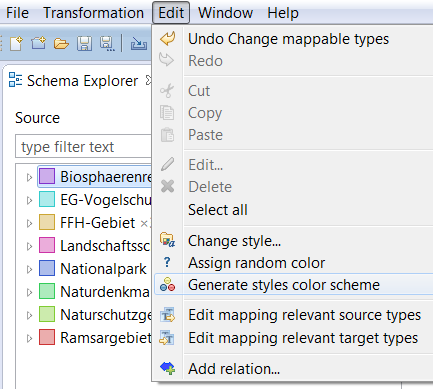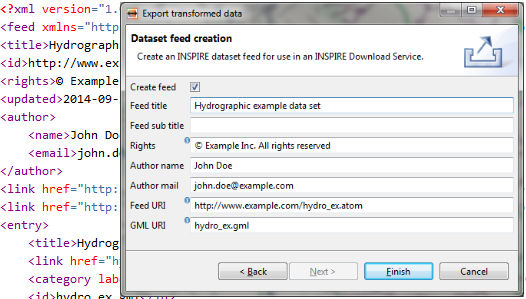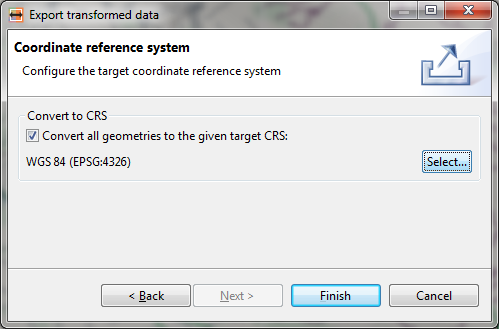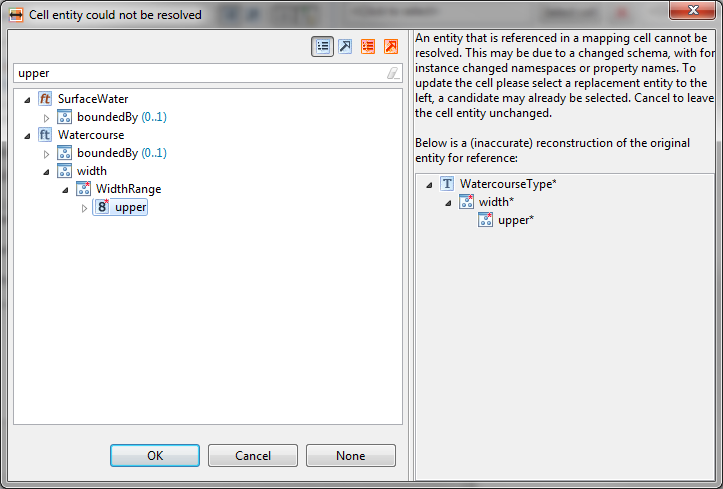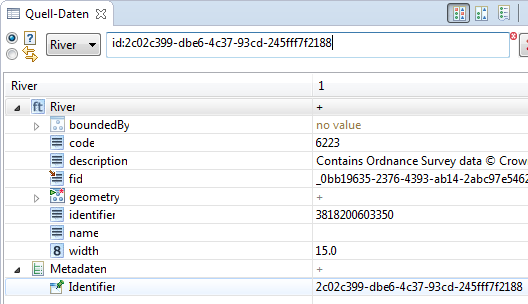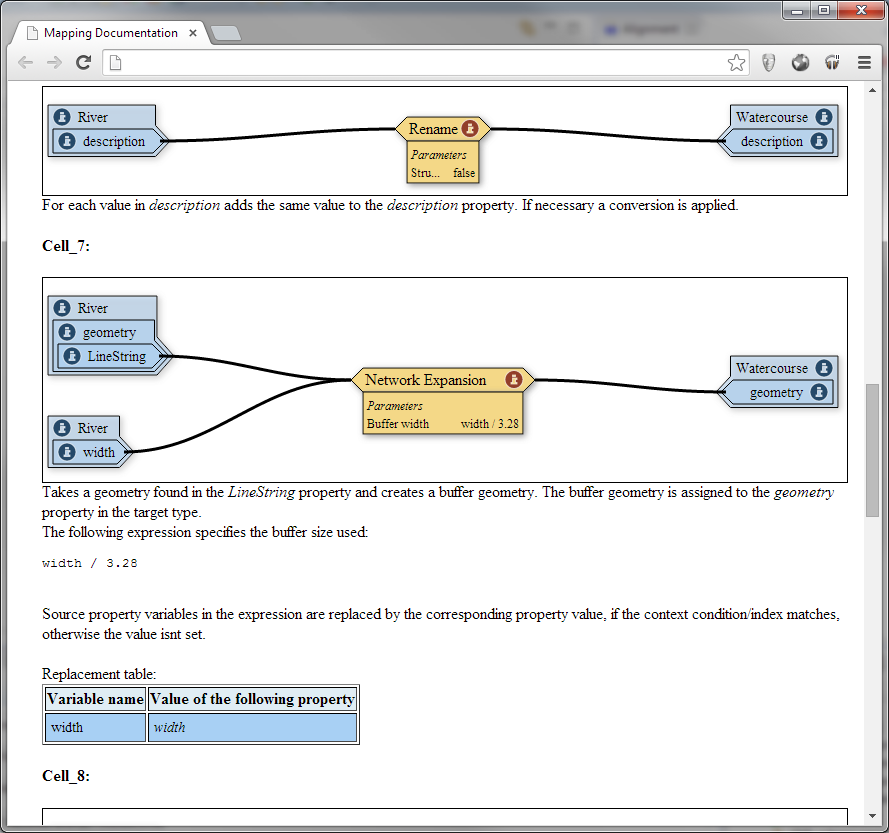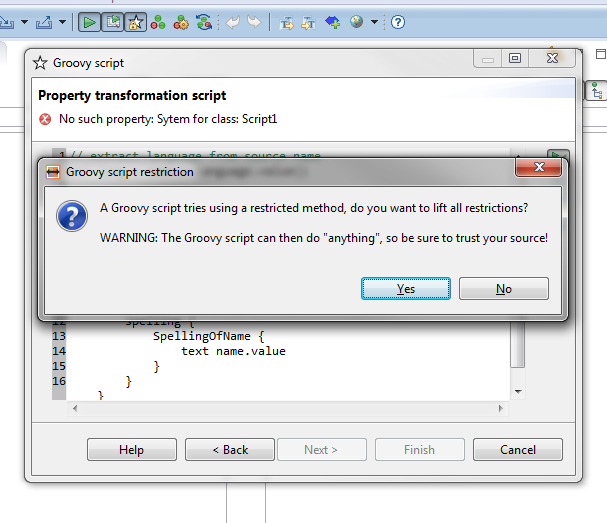New features
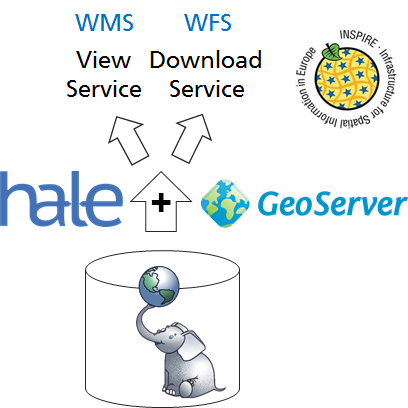
This is the first release of this integration of HALE and GeoServer and though functional, should still be considered experimental. Please see the GeoServer App-Schema Plug-in for HALE help for more information on usage and limitations.
Thanks to GeoSolutions and Stefano Costa for this contribution to HALE.
As an example, let's assume we are looking at a mapping between
different CityGML schemas or ADEs. In both source and target there
is the concept of a Building and a BuildingPart. BuildingParts
can be features on their own, thus a mapping is defined based on a
Retype between the corresponding source and target types.
Buildings however can also contain BuildingParts,
and to transform these internal BuildingParts we can use
the Inline transformation to tell HALE that it should
transform the internal objects the same way as it would standalone
features, with the additional step to include it in the respective
target property.

Tweaks & bug fixes
Thanks to Landesbetrieb Geoinformation und Vermessung Hamburg for funding this work under a Professional Support Subscription for HALE.
Thanks to HL Consulting BVBA for funding this work under a Professional Support Subscription for HALE. They use this feature to define their alignments on a schema that allows them to make extensive use of relation inheritance in their alignment, to have one mapping that they can use to transform data from different services.
- Added an option for loading an XML Schema that allows to use all globally defined types for the alignment.
- Deprecated INSPIRE SpatialDataSet export, as INSPIRE now recommends to use a WFS 2.0 FeatureCollection instead.
- Support generating a Dataset Feed file for an ATOM-based INSPIRE predefined Dataset Download Service when exporting to a WFS 2.0 FeatureCollection.
- Groovy type transformations can throw a NoResultException to prevent the creation of a target instance.
- Added a Groovy variant of the Join transformation that allows for more control on the creation of transformed instances.
- Introduced the concept of helper functions available from Groovy scripts. Currently included are helpers for dealing with geometries and performing type conversions.
- Structural copies with Rename and Retype can now explicitly exclude geometry objects parsed by HALE, for cases where the original geometry encoding should be retained.
- A default SRS can now be specified on the command line, for reading data from a specific source, in case HALE cannot correctly detect the SRS.
- Handling foreign key constraints during the export to a database has been improved.
- Fixed erroneous flipping of coordinates when displaying geometries in the map view (Thanks to Willem Stolte for the bug report).
- Fixed the File Dialog on Mac OS X being rendered unusable after first use (Thanks to Olav Peeters for the bug report).
- Fixed handling of nillable complex XML elements containing only a nilReason (Thanks to Ann Crabbe for the bug report).
- Fixed proxy configuration not being applied when loading code lists, accessing the INSPIRE registry or loading web templates.
- Fixed Merge type transformation configuration for property names containing dots (Thanks to Willem Stolte for the bug report).
- Fixed encoding of simple type lists in XML.
- Fixed handling of target URI without path in the Command Line Interface.
- Fixed handling of absolute file locations in the Command Line Interface on Windows.
- Fixed live validation based on XML Schema which sometimes treated null values wrong.
- Fixed UI problems when using type conditions and custom map styles.
- Fixed the inconsistent behavior on which instances can be retrieved from the internal temporary database in comparison to a file or other source.
